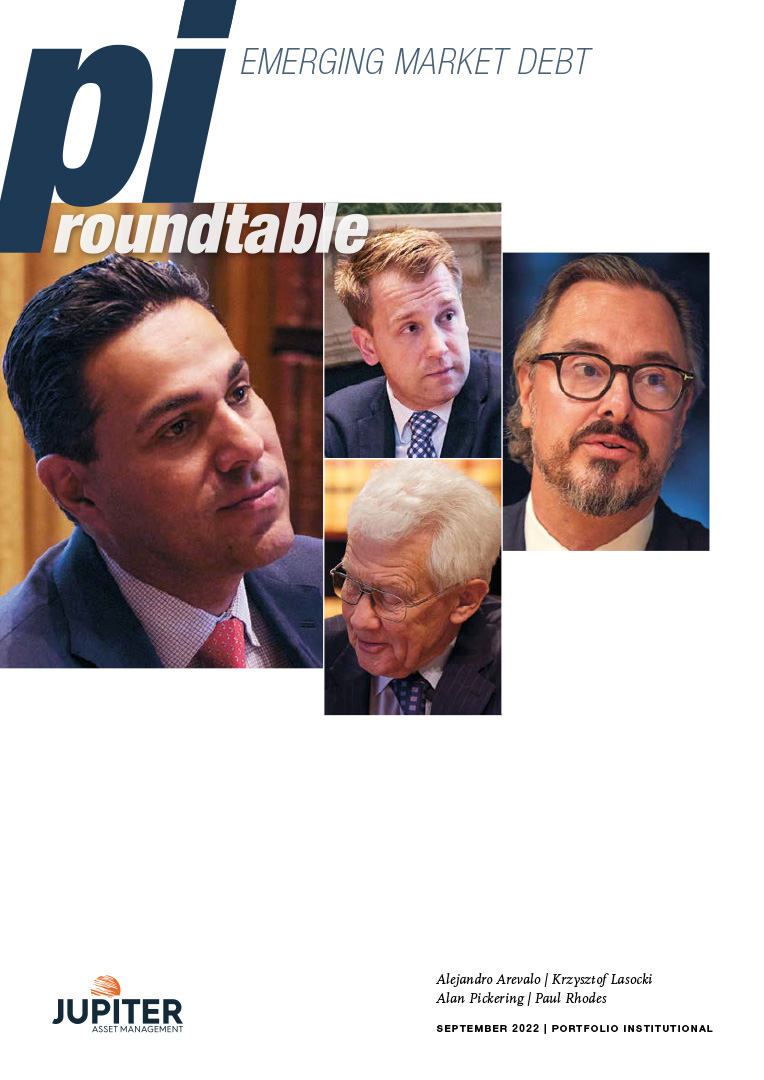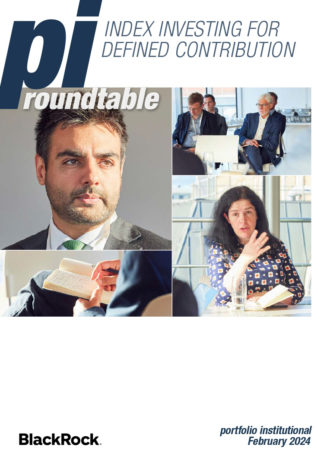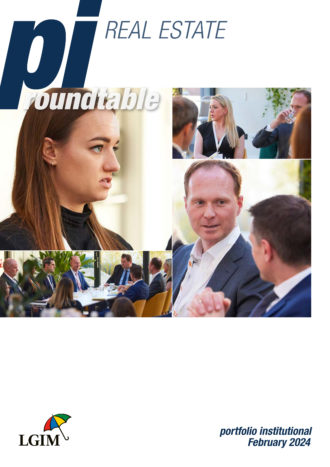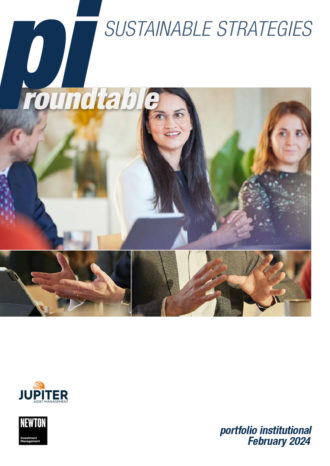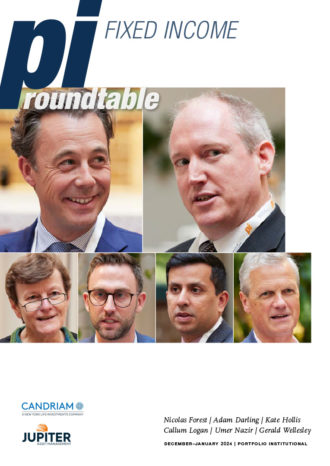Numerous fund managers and market commentators are still reporting that the biggest misconception some investors make about emerging markets is that they are all the same. If there are problems in Argentina, for example, then there must be problems in India. It seems to be a view many investors hold judging by the outflows we have seen this year.
We invited asset owners to sit down with an emerging market debt specialist to discuss why the asset class has seen such a spike in outflows. In front of an audience, they debated how concerned investors should be about negative headlines and where lenders can find value in the developing world.
Participants
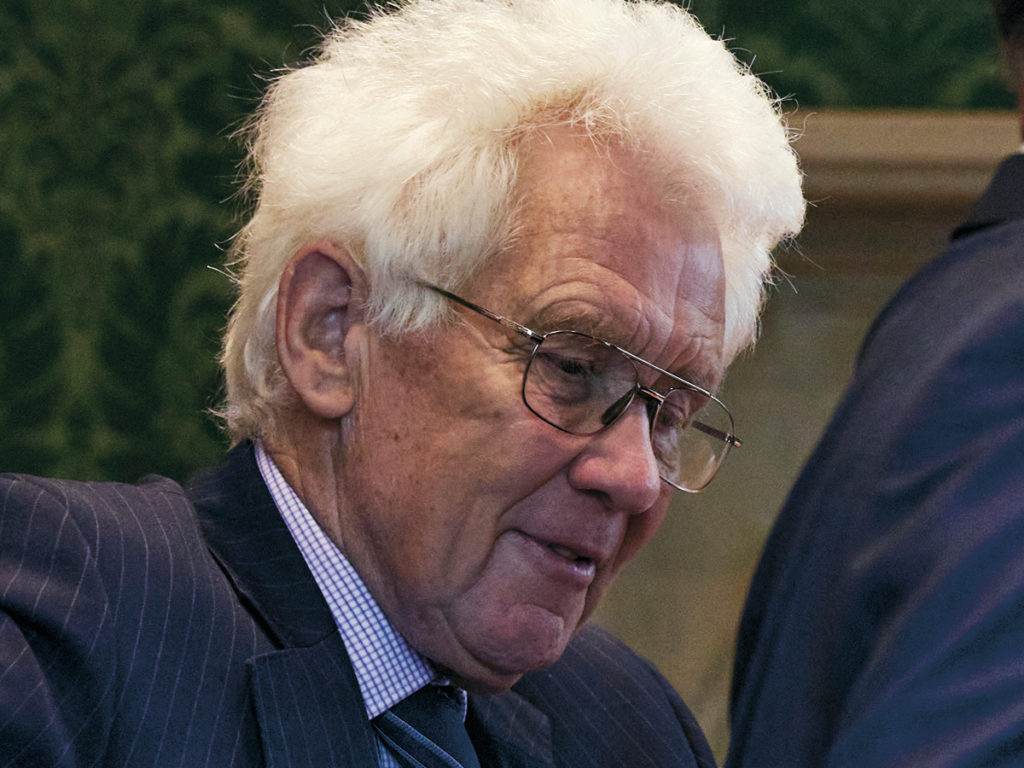
Alan Pickering
President Best Trustees
Alan Pickering is a trustee of the retirement plan for plumbers and mechanical engineers as well as for workplace scheme The People’s Pension.
His experience is vast having served as
a non-executive director of The Pensions Regulator and as a member of the Occupational Pensions Board.
Pickering is also a former chair of the body that is now known as the Pensions and Lifetime Savings Association (PLSA). In 2002, he wrote A Simpler Way to Better Pensions, a government-sponsored report on the industry.
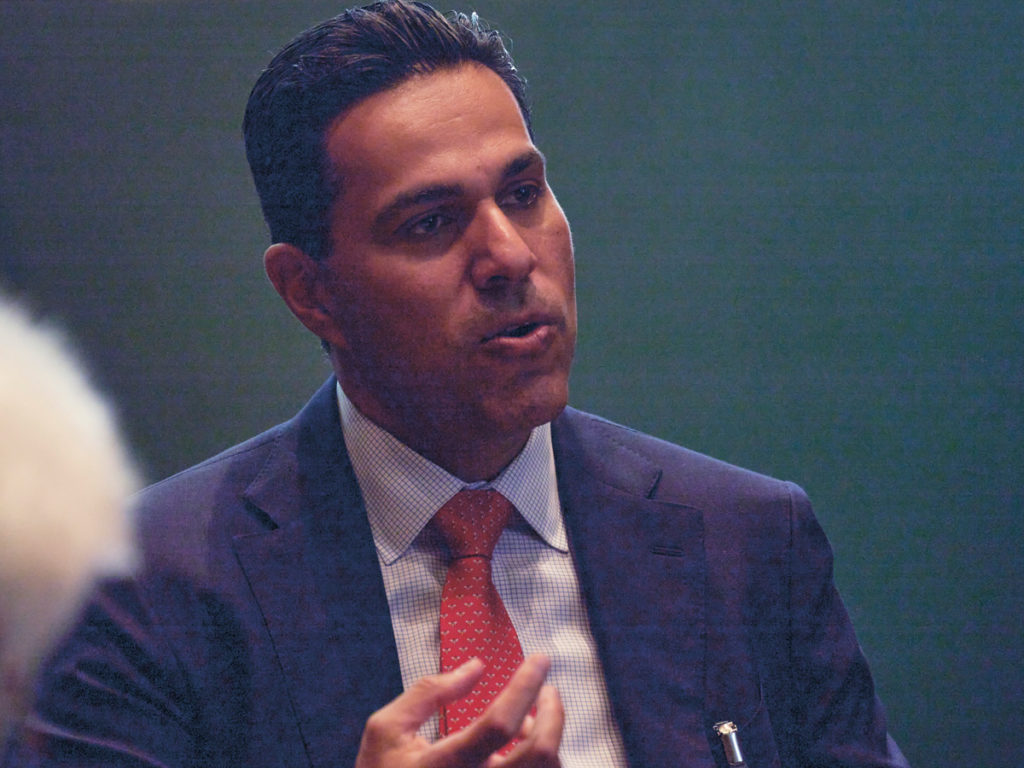
Alejandro Arevalo
Head of emerging market debt Jupiter Asset Management
Alejandro Arevalo began his investment career in 1998 and has spent the past seven years
at Jupiter. Prior to this he was an emerging markets corporate debt portfolio manager at Pioneer Investments.
Arevalo has also worked on emerging market debt strategies at Standard Bank Asset Management, Gibraltar Bank and the International Bank of Miami.
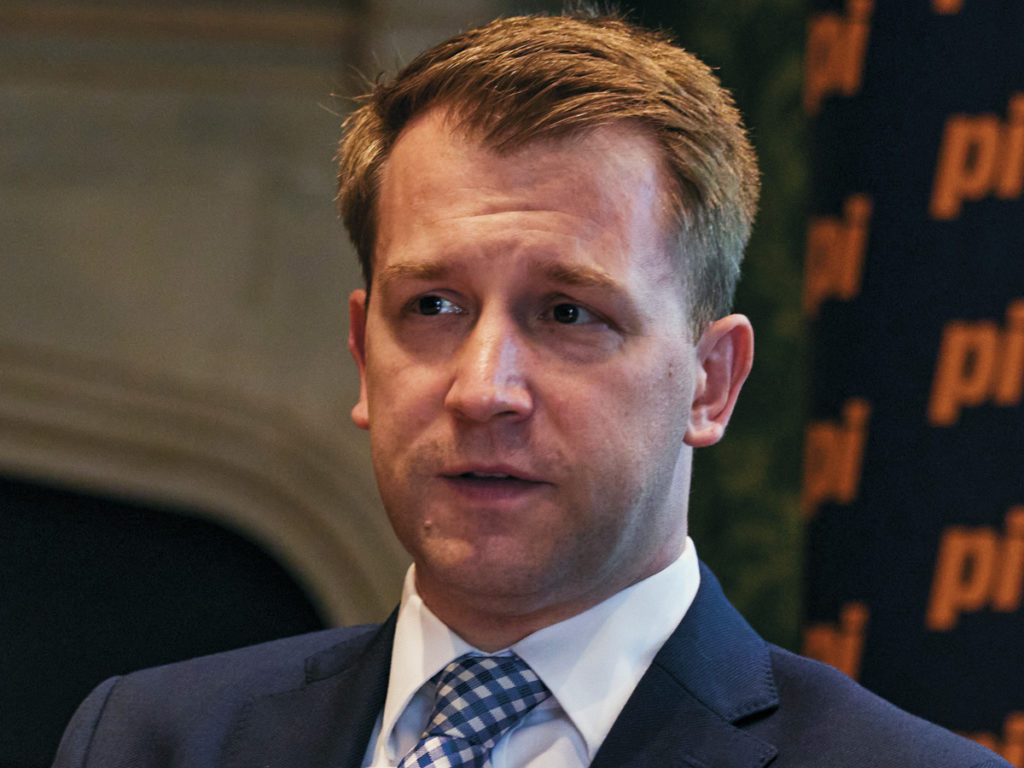
Krzysztof Lasocki
Investment manager Royal Mail Pension Plan
Krzysztof Lasocki is responsible for investment at the Royal Mail’s pension scheme. His day-to-day portfolio management duties include selecting investment managers.
Lasocki joined the pension plan five years ago to assist the chief investment officer in managing a diversified portfolio of assets worth more than £13bn.
He also has PwC, Intel, Capita and investment consultant PiRho on his CV.
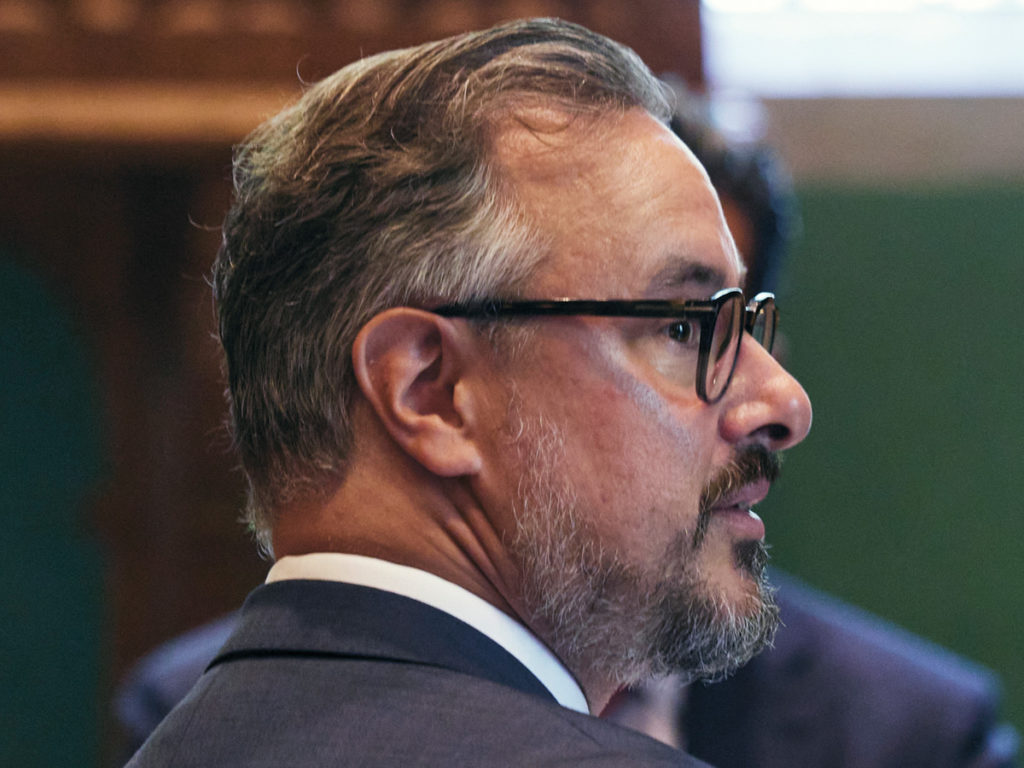
Paul Rhodes
Trustee
Reach Pension Plan
Paul Rhodes is a member-nominated trustee for the pension plan sponsored by Reach, a newspaper and magazine publisher.
He has been a journalist for 20 years having worked on The Scotsman, Daily Express and Daily Mirror. Rhodes, who is currently chief sub-editor of The Daily Star, co-founded the Climate Impact Initiative to make climate impact investments available for defined contribution savers.
The discussion
What emerging market exposure does Reach’s pension plan hold in its debt portfolios?
Paul Rhodes: We have exposure to emerging markets through our default fund. For many small and medium-sized de ned contribution plans, looking outside of bundled products for something more specific can be difficult. Another consideration of greater exposure is whether the reward is warranted, given the risks.
There are many positives to investing in emerging markets (EM), but when the US dollar is as high as it is now the risk of emerging market debt defaulting rises.
So the risks are high for defined contribution (DC) members to invest in these assets right now, but there could be benefits for those with a longer time horizon.
Is Reach’s time horizon long enough to consider expanding its interests here?
Rhodes: We consider lots of things. Looking at the next decade, emerging markets could offer more growth than developed markets (DM). It is something to look at.
How important are emerging markets to the schemes you work with, Alan?
Alan Pickering: In defined contribution land, emerging markets play an important role during the growth phase. The challenge is to determine how much to compartmentalise the worldwide exposures during that period.
Many of us have bought into the argument that diversification is a free lunch, that it gives equity-like upside without the downside. People are now taking stock and wondering if it is sensible to compartmentalise the growth phase rather than sub-contract the portfolio to an asset manager who can move the money around.
Where it may have a role to play in de ned contribution land is when we move into consolidation and drawdown. There is a need for diversification and income, which has the prospect of growing during a lengthy retirement period.
In defined benefit (DB) land, most of us are close to risk transfer. There are many entities to whom we can transfer the risk, and these assets can be viewed as an alignment as we move towards the de-risking process.
One has to be careful of how long the timeframe is, how liquid the markets are and how volatile they are. If you want to transact when all the stars are aligned there could be a danger that some may not. It is an asset class we ignore at our peril.
Krzysztof, you attended an emerging market debt roundtable of ours before Covid struck. How has your portfolio changed?
Krzysztof Lasocki: We have a similar allocation as a percentage of our growth assets. There are reasons to hold emerging market debt, even though the short-term picture is concerning. Fundamentally speaking, the emerging market story is still that it is the powerhouse of the world’s growth.
There are reasons to worry that the growth differential between emerging and developed markets could disappear, which could limit the attractiveness of EM debt in a growth portfolio. Certain factors, such as demographics, make me optimistic from a long-term perspective but you have to be selective.
There will be winners, there will be losers. Demographics are not the same in India as they are in China, for example. There will be corporates and countries that might su er in the next six to 12 months.
It is risky now to be super bullish, but we maintain our position. We have never considered divesting due to poor performance. We have a diversified portfolio of more than 80 strategies. Emerging market debt has a place in our portfolios and it is there to stay.
Alejandro Arevalo: I agree about being selective. A big misconception with emerging markets is that in moments of stress the correlation tends to be one. You can have a diversified portfolio, but because of stress in the market everything goes down.
However, we need to break it down. At every point of the cycle there will be winners and losers. We try to provide investors with the companies and sovereigns that could push through the cycle. That is where the value of investing in emerging markets will come.
If we take a blanket approach to EM against other markets, that differentiation comes down. But 10 years ago we were talking about BRICS, which was five countries. We do not use that terminology anymore because there is a wider group of sovereigns pushing growth. It is not only China, which is slowing down.
When we compare EM to DM, we need to focus on what is in that pool. We cannot generalise. On the point of the dollar, it tends to be a risk in a sovereign emerging market context. Debt sustainability can be an issue, especially in markets where sovereigns rely on cheap financing and international investors to continue issuing debt.
A big mistake in a low-rate environment is that for many countries it is easy to issue debt. I do not know how many times Argentina has defaulted, but it has been able to come to the market again and again. Frontier markets that have problems offered attractive yields three years ago of around 7%. Now we are talking about double digits. We need to differentiate.
Thinking about the long-term development of EM, local savings have grown. Now we tend to talk about local pension funds, local insurance companies and sovereign wealth funds. The combination of local debt against dollar debt has started to change because there are deeper pools of local financing that sovereigns, quasi-sovereigns and corporates are tapping into.
When there are shocks in the dollar – we will see more defaults, especially in frontier mar- kets if they do not re nance soon – it will not be bad for all emerging markets. As long as local markets keep growing, they should be able to fund themselves.
The other point about the dollar is that when we build a portfolio we focus on companies that have a natural hedge against a strong dollar. This means exporters, utilities, telecoms and banks.
In what other ways are emerging markets changing?
Arevalo: We are in a different place than we were 10 years ago. Central banks in many emerging market countries started raising rates well before the Fed did. Brazil raised rates to 13% and has started to wind down its tightening cycle.
The expectation that central banks are there to protect the FX and fund the government is changing. There is now more inflation targeting. Of course, there will be mistakes along the road, that is why we call them emerging, but we have seen some positive changes along the way.
With Covid, war in Ukraine, growth slowing in China and inflation, where should investors look in emerging markets for winners?
Arevalo: We divide EM by three regions when allocating capital. The region worrying us most, and where we are underweight, is Asia. This is not only because of China, but inflation, too. Many central banks in Asia have been lagging in terms of increasing rates. They are going to have to tighten quickly, which will push many of these countries into recession.
Then there is EMEA [Europe, Middle East, Africa] with the Middle East becoming a safe haven. It is about oil. Countries investors were worried would default four years ago, like Oman and Bahrain, now have a current account surplus, are undergoing reforms and are awash with liquidity.
The main defaults will be in Africa, which does not have deep local markets. They rely on commodities, which are under pressure.
We also like Latin America, even with some geopolitical risks we have seen lately. We have seen a shift from left to right to left again, but the economies tend to be net exporters.
We are in an environment where commodity prices could come down. Most of these countries have a combination of exporters and strong local economies coming out of Covid, so it has taken a long time for them to re-engage.
We are starting to see a lot of consumption coming through and central banks have been ahead of the curve, so inflation expectations are falling. If you navigate Latin America carefully you could find interesting opportunities.
Pickering: Regulators have tried to help end-users by having classifications that are simple and top-down, but, as we just heard, those classifications can make us lazy. We can tar everything with the same brush and yet differentiation is key given that within these top-down classifications there are a diverse family of assets, opportunities and risks.
Those who create standards have to be careful not to create unintended consequences when trying to make life easier for people like me. My life should be made more difficult, rather than relying on some classification where everything in the tin is homogeneous, which it isn’t.
Lasocki: It is an important point about how investors see EM as a whole. That creates a number of opportunities because certain areas, regions or sectors tend to be oversold at times of stress. Countries in central Europe, for instance, usually had little to do with the worries in the global emerging markets, at least until the invasion of Ukraine. Still, most of the times wider EM suffered, Central and Eastern European currencies and bond spreads followed.
The bottom-up view is important. For example, even though you may have a negative view on the sovereign, you may find companies with potential for spread contraction and a strong ESG upside in that country.
It is important to be active in this space. Investing passively in emerging market bonds is a recipe for disaster.
Arevalo: What is interesting is that the fundamentals are out of the door. Prices are being driven by outflows. In the year to date, we have seen about $50bn (£41bn) of outflows from EM, half of that is local currency. Across the industry you hear that prices have dropped because there are so many forced sellers.
No one wants to stand on the other side. The big counterparties are not willing to take bonds into their inventory and unless someone is willing to buy the bonds they will continue to be marked down.
There are some interesting opportunities out there but I am not jumping in yet because a lot of investors are “tourists”. They like the yield, they like the story but they jump out at the rst bad headline.
That has created volatility, which creates opportunity. An Indonesian quasi-sovereign, for example, has tended a bond. Shortly after the announcement we could buy that bond for five points below the tender price. These forced sellers need to raise cash and were willing to give up five points because they do not want to hold the paper for the next three weeks. I have not seen that since 2008. This panic we are seeing in the market makes no sense.
Have the sell-offs tempted you, Paul?
Rhodes: A lot of the companies mentioned are in commodities, like oil and coal. Many DC boards have net-zero targets, some of which are quite aggressive, but many emerging market countries have targets that stretch beyond 2050. So there is an argument that some of these vehicles may not be viable.
It comes down to being specific and targeting things. Some DC schemes may not be interested in buying debt from oil producers or companies with high emissions.
There are a lot of questions, especially as the regulator wants us to take climate change into account. We have to look through that lens when exploring emerging markets. If there is something we can get into, we have to ask if it fits the other criteria.
There are lots of questions involved in adding EM debt to a DC default. It could possibly be easier if there was a specific self-select fund a scheme could put to its members, for example.
Pickering: As a pension scheme trustee, I am not keen on encouraging self-select. Defaults properly structured with the members in mind should not just be default in name, but default in action.
There is scope as DC schemes move more and more to master trusts, which offer a financial wellness package of savings vehicles with access to advice, to have self-select funds in the Isa-side of the savings wrapper rather than the pensions side where the trustee is o the hook to some extent.
But by providing financial advice as part of the package, those who are genuinely sophisticated and want to drill down to more focused market allocations can do so within their savings portfolio. When it comes to the mainstream DC offering, there is a lot of scope for creative thinking because in DC there has been a false catalyst of retirement age.
Where people have a DC plan and a state pension and no DB legacy, they need to arrange their savings for 20 to 30 years of life expectancy.
The trustees who are stewarding those long-term savings vehicles, without the guarantee that is part of a DB or annuity offering, there is scope for volatile asset classes within that time-frame which ought not be subject to day trading.
Rhodes: This is where, in DC, a well-formulated default fund should offer something balanced. Going forward, in looking for growth, emerging markets are likely to become a greater part of that. We rely on our fund managers to create the correct balance of exposures to all of these things as we transition to a net-zero world.
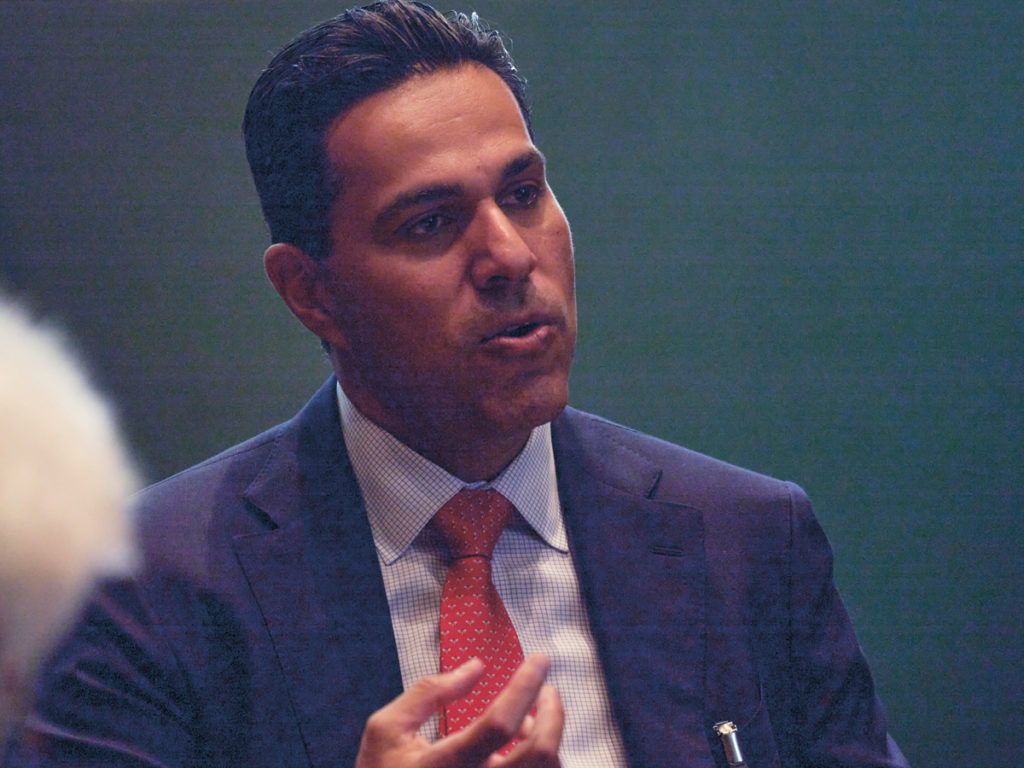
There are some interesting opportunities out there but I am not jumping in yet because a lot of investors are “tourists”. They like the yield, they like the story but they jump out at the first bad headline.
Alejandro Arevalo, Jupiter Asset Management
Are developed market portfolios with emerging market debt exposures ready for a hawkish Fed?
Pickering: It is difficult to second-guess central bankers. I am glad to be an asset owner rather than the asset manager.
They are in the firing line. As we speak, we are in the throes of electing a new prime minister. Our central bank has been sucked into the electioneering for the leadership of the UK government.
Until now there has been a consensus that central bankers should be hands o when it comes to political issues. Rather than thinking about what central bankers might throw at us, we need to ask are central bankers ready for what other people might throw at them. The role of central banks may be coming under political scrutiny.
Lasocki: The political landscape in the US is tricky from an EM perspective. As ever, a strong dollar and rising yields in the US are detrimental to EM.
The question is how long politically can the Fed allow inflation to remain high in the US. Mid-term elections are coming up, so there is a lot of political uncertainty.
The US is on the brink of recession, but it is a rare recession where unemployment is low. We have the same problem in Britain and Europe – real wages lagging behind employment. There are a lot of moving parts in the US.
I hear conflicting forecasts in the US from investors, managers, economists and colleagues on how the Fed might act. Perhaps they may retract sooner than the markets expect and go back to lower rates.
To answer the question, I am not sure EM countries are ready for this. For example, I am worried about Brazil, which is highly indebted and has presidential elections this year. There is political uncertainty and the incumbent is spending a lot of money to save his re-election. On the other hand, the front-runner is a returning left wing ex-president who may have his own spending agenda if elected.
It is not an optimistic scenario for the future, whatever happens. Brazil is running a high debt-to-GDP ratio, and the cost of servicing external debt is high. A strong dollar is exacerbating those problems.
South Africa is in a similar situation, to some extent. There is little room for manoeuvre for many countries. They cannot de-value their currencies, so they might have to restructure their debt. I appreciate it is a bearish scenario but we might have defaults in some EM countries indirectly because of what is happening with the Fed and inflation in the US.
Arevalo: I do not agree with Krzysztof about Brazil, particularly on the political side. Lula was president of Brazil for seven years and won his rst mandate by being very left. When in government, he became more moderate.
What has been interesting in this cycle, is that Lula’s vice president is the governor of São Paulo, who is market friendly. Lula will most likely be elected, which is not a big political risk and spreads are pricing in a worst case scenario.
Lula will likely do what he did in his first term. He is talking about the rise in poverty, which has brought him back, but I do not think he is going to derail the economy fixing it.
I see more risk with Bolsonaro [the incumbent], who is exceeding the spending cap to finance his campaign. If he is re-elected there is a risk that debt-to-GDP will increase. Will Brazil default? It would have to be an extreme scenario for that to happen.
We are not running away from Brazil. We take a bottom-up approach of looking at the economy and its politics. Brazil has a closed economy, so most of its growth is driven by consumption. Now we have strong inflation and interest rates are high, but inflation is expected to peak in the coming months. We will see if that is correct.
It has a central bank approaching the end of its tightening cycle, strong consumption and exports 60% of its commodities – mainly wheat and protein – to China. It will continue to see that demand. Looking at valuations, there are some interesting opportunities in Brazil, even on the sovereign side.
And South Africa? We had a local currency position there. We closed it, not because of the rand, but due to the flight to safety and the strength of the dollar. You can put South Africa’s central bank in the same pocket as Brazil’s. They have been extremely bearish in trying to solve inflation and have shown their credentials for political independence.
While there are issues in the country, they are showing signs of growing and developing, which makes sense to us as an investor.
Lasocki: I agree and would not say that Brazil or South Africa are anywhere near the top of the list of worries for EM debt investors. For me it is China. Talk of a commodity boom is premature. It is a frail commodity rally.
Unlike the one between 2002 and 2008, it is not based on strong fundamentals and a fantastic emerging market story, which was when China was growing at double-digit rates and most EM countries were light in debt and had a lot of room to grow.
That rally was based on the demand side, whereas now, with a few exceptions, the underlying reasons driving the rally are disruptions on the supply side, for example shocks to wheat producers or energy supply.
To me, China is the biggest risk because the commodity boom is not going to support growth in EM. China is super reliant on its real estate and nancial sectors and there is little room for error left. It would be a bloodbath if a sector that covers so much of China’s GDP falls further.
Arevalo: There has already been a bloodbath.
Lasocki: Some investors may see value in this if they want to exploit distressed opportunities. I would tread carefully, unless you want to rely on a recovery. This is a different way of investing.
Arevalo: We have been looking at China’s real estate sector. To give you a sense of how much of a bloodbath there has been, of the 48 companies which had dollar bonds only eight are still standing.
Real estate is about 20% of China’s GDP. There have been headlines that people are not willing to pay their mortgage until their property is completed. So unless the government does something, the economy will struggle to meet the 5.5% target.
In the past 10 years China has not missed its growth target by more than 50 basis points. Even if you give them some wiggle room, they will be far away from 5.5%.
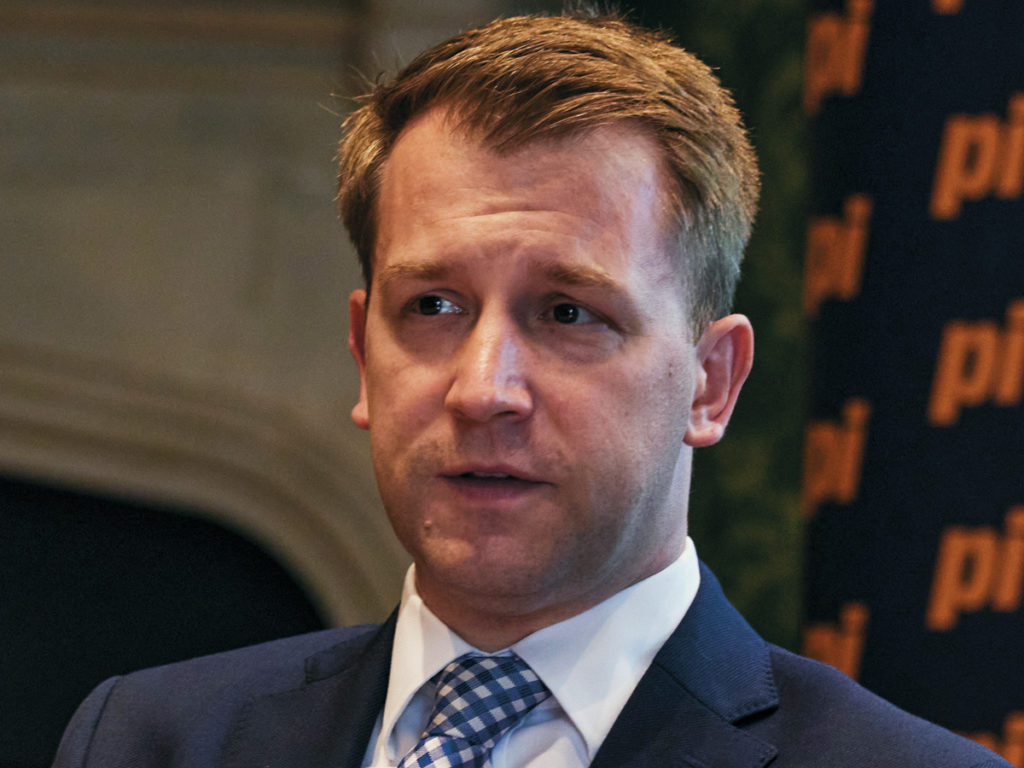
Investing passively in emerging market bonds is a recipe for disaster.
Krzysztof Lasocki, Royal Mail Pension Plan
If you are based in London how do you know what is happening in China, Brazil and South Africa?
Arevalo: I am lucky to have an excellent team. We have specialists focusing on Asia, EMEA and Latin America. What is also important is having strong relationships with research houses.
A question we are often asked is why doesn’t Jupiter cover Asia from its o ces in Hong Kong and Singapore. To me, we have reached a point where there is so much local knowledge we can access that we do not need someone to be in the country.
On top of that we travel. I have been to Latin America and my peers have been to Turkey, Indonesia and Africa. It is important when you invest to kick the tyres to see what is happening on the ground.
During those trips you meet government officials, journalists and companies, so after five days you come away with a good feeling of what is happening in the country. It is about relationships, travelling and having a good team.
Do you have confidence in the standards of ESG in the emerging world?
Rhodes: There are questions about ESG in developed markets. It is difficult because there is no single standard of measurement. Factor investing could be useful here because certain stocks are left behind, limiting your risk.
As an industry more needs to be done to set a standard metric on this. Until that happens, I do not know how much faith many trustees will have in the wildly varying reports they receive.
The industry has to do more to give trustees confidence in what is measured, how it is measured and how transparent it is.
Lasocki: ESG is critical. The conversation has evolved. It is no longer about simply asking managers if they have an ESG policy. It is not a box-ticking exercise.
It is probably the one thing pension plan members would ask me about if they met me. They probably wouldn’t ask about particular names in the portfolio, they would ask what happens with their pensions money ESG-wise.
It is great to work for a prestigious name such as Royal Mail but it comes with huge responsibility. You do not want newspaper headlines telling people that the Royal Mail’s pensioners ended up funding certain activities.
Going back to selectivity, there is a huge reliance in the industry on ratings and a simplistic approach. For example, Russian bank Sberbank was one of the top rated ESG companies ahead of JP Morgan and Deutsche before the invasion.
I have always been based by how easily investors agree to lend money to a bloody regime or companies funding it, while at the same time rightly rejecting investing in, for example, polluters. You cannot always avoid the political context of ESG. Russia is one name, but there are other sovereigns which are questionable from a social perspective.
Investors should be mindful of certain sovereigns if they are serious about ESG.
Passive money is not good at that. With ESG you have to be selective, need an active approach, ideally someone who has ESG incorporated at every stage of the investment process, otherwise it is a simplistic, knee-jerk approach. Investors should look into the future and see ESG as a source of alpha.
Arevalo: ESG is part of our process. We have a dedicated person who focuses on ESG and engagement. It’s what she does all day. Sovereigns are difficult to engage with because more people are willing to give them money. That mentality has to change. Sovereigns have to be more willing to answer questions and engage with investors. It will be a slow development.
We are starting to see in specific sectors such as coal, which is a typical red flag for an ESG fund, that the number of investors is shrinking.
That is reflected in them paying higher coupons than similar rated companies in other sectors because of their ESG risk. It is coming, but slowly. There is no standard so every asset manager has to do the best they can and explain their process. We are seeing more green bonds and you have to differentiate between those that are truly green and those which are not.
One of the downsides of the ESG movement is that demand is higher than supply. There are not as many bonds outstanding as there are funds chasing them. What that has created is that green bonds tend to trade slightly more expensively than normal bonds, even if they are issued by the same company.
As supply increases valuation discrepancies between bonds issued by the same company will start to level out.
Pickering: I am much more comfortable with the ESG debate than with the ethical or socially responsible investing that were the earlier manifestations of wanting to behave better with other people’s money.

